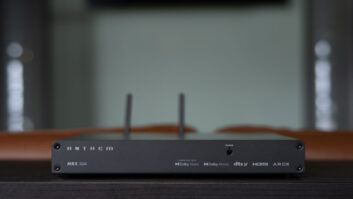
It happened again last week as I was meeting with a client to go over the usage of his new system in a just-completed apartment renovation. And it happens on at least 50 percent of our projects — more likely 75 percent+ (I just haven’t tracked it) — at some point near the end of the project, a client will say something along the lines of, “You know what Todd, yours is the only company during this whole ordeal that has been a pleasure to work with.” Almost invariably home owners are not happy with their general contractor, electrician, plumber, stone company, millworker, architect, or some combination of those trades.
I even have clients who will confide in me and ask my opinion about the work of other trades. In these cases I try to be very non-committal or positive about the other trade. I will never speak badly of someone and will try to buck them up in the client’s eyes, especially if I see that their reputation is salvageable.
So how do regularly end up in this enviable position? After a bit of deep thought and talking to colleagues with similar experiences, I have come up with the key five factors:
1.Set clear expectations.
It is such a trite expression that is repeated constantly, but I constantly see other professionals dig themselves a hole by promising the world and not being able to deliver. I know it is a difficult line to balance in our industry — our clients want to be wowed by what we deliver and have high expectations that everything will work perfectly from day one and that the process will be a breeze. We have learned to set expectations low and over-deliver. How do we do that? Let clients know there will be a “shaking-out” period after final commissioning, and that there will be glitches. We also do the small things like always taking off our shoes or wearing booties every time we enter the home. We make sure to lend a hand if they are lifting something heavy or need something moved. And the biggest one: we show up when we say we are going to show up.
Another thing I do frequently is to add a little touch of extra programming. For example, if a client seems a little technologically inclined, I will put in some custom commands to change the soundfields so they can easily switch between 2-channel, surround, and 5-channel stereo. I know Control4 dealers who always include a “Find My Remote” button in every project. When the client sees it on the screen during the handover, they just say, “Oh, that is like LoJack for your remote — push this button and your remote will start to beep so you can find it.” Clients love it.
2. Be clean and presentable and exhibit a good attitude.
It is amazing how many business owners and install teams from other trades that I see show up near the end of a project and they look sloppy, don’t wear booties, leave dust and debris behind at the end of the day, etc. It isn’t that hard to look presentable and to treat the client’s home with respect, so there is no excuse.
Keeping a positive attitude can sometimes be more difficult, but it is critical. Some clients can be frustrating, and it can be easy to lose your cool. You need to maintain a calm demeanor and be the calming influence in the discussion. You just have to take it sometimes. You can always “fire” the client after the first 6–12 months, but doing so during or just after the project will risk your reputation. Be nice and the client will often be nice back. Often their frustration with other professionals or trades on the project will spill over. If you can keep it calm, they will mellow and then will appreciate you as a sympathetic ear and you are in like gold.
Also by Todd Anthony Puma: Rewarding Clients for Rewarding You
3. Change order is a dirty word.
From almost day one on a project, clients hear the words “change order” and they have a visceral reaction to it. They see it as nickel and diming, and I have seen many get visibly upset. I realize that we also have to be fiscally responsible as business owners and can’t give away the store. First of all, if it is our fault and we forgot to spec something in that was necessary — maybe we miscalculated how many network ports we need or power outlets in the rack — then we eat it. When it is something client-directed, if the ask is minimal, I can usually offset it elsewhere and will do so — I almost always spec in 2-4 more access points than I think we will need, just in case the wireless environment is worse than expected (we are in NYC and deal with a lot of noise as well as a lot of difficult construction materials, and can usually get a little extra wiggle room there, and also with extra InfinitEX gateways). And TVs almost always come down in price between the start of a project and the end. But it is case by case and will depend on the overall size and budget of the project, what our workload is (are we losing out on other revenue if my team spends an extra half day or day on site), what we have in inventory we can use, and if we can apply any manufacturer rebates to the project to create some wiggle room.
If all else fails and we need to charge for something, I always try to position it as an upgrade. I will say, “We can definitely upgrade that dimmer to a keypad” or “No problem upgrading from a 55-inch TV to a 75-inc model, I’ll put a proposal together for you right away.” If it is perceived as an upgrade and not a change order, it is much more likely to be accepted. If it is purely a labor issue, like moving a speaker location or a TV location or some light programming, we can usually just work that in when a team is on-site anyway, so I will typically not charge for that. A little bit can go a long way in terms of gaining client respect.
4. Don’t blame others.
I know it is easy when something goes to wrong to place the blame on others. And it is even easier to commiserate with the client when they are complaining about another professional or trade on the project. Do not give in. If something went wrong with another trade — maybe a drywaller put a screw through your wire or a the electrician cut a cable — work with the other trade or the general contractor first. Just like not nickel and diming the client, working with the other trades to get these issues fixed and done right is something the client will appreciate. If you find something was damaged, just tell the client you are going to investigate it and talk to the GC before you make any judgements. Then just get it fixed if you can. You’d be amazed how excited clients are when a problem is just solved and no one is pointing fingers
Also by Todd Anthony Puma: Forging Great Vendor Relationships
5. Make it personal.
One acronym I have carried with me for years is CARE: Contact, Ask questions, Recommend, Encourage. This has been my mantra in all of my customer interactions.
The first two are pretty obvious — make personal Contact in person or over the phone. Then Ask qualifying and lifestyle questions. Now that you have a feel for what their needs are, make Recommendations based on your knowledge and Encourage the customer to provide feedback on the Recommendations so you can fine-tune. Active listening is key — don’t just spout out your standard setup, listen to the client’s needs, and parrot them back to them. “So I hear that you listen to a lot of classical music and clarity of the instruments is key to you” or “So you have young children, and being sure of their safety and having the ability to monitor them when home or at work is critical.”
There you have it — my five long-winded keys to being your client’s favorite person ever!







